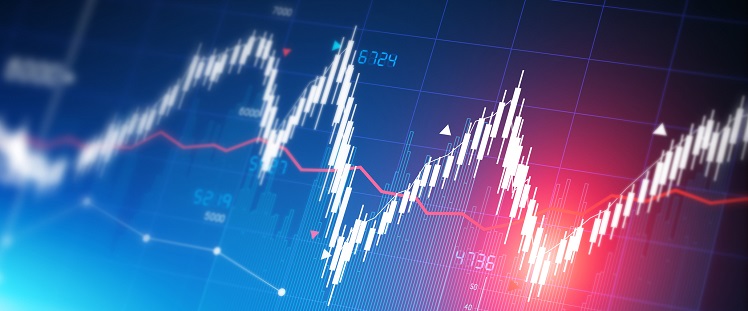Articles
Key Tips for Adjusting Hedge Coverage Over Time
- By Ira Kawaller
- Published: 1/4/2017

One of the tricky aspects underlying the determination of how much to hedge is that whenever market expectations become widely accepted by economic actors, those expectations get reflected in the prices of derivative contracts. For example, when everyone is convinced that interest rates are poised to rise, the cost of hedging against rising interest rates incorporates these expected rate increases. The more dramatic the expected price change, the higher the cost to hedge that risk.
A wholly distinct class of companies operate with exactly the opposite risk concerns—i.e., having an exposure to the risk of falling interest rates. These firms would be cash-rich companies—or more likely financial institutions—that earn interest revenues. For such firms, consensus expectations of higher interest rates actually serve as a hedge inducement in that derivatives pricing allows these firms to lock in more attractive (i.e., higher) interest rates than those currently available, as reflected by spot market conditions. In effect, the market is paying these companies to hedge their exposures, as opposed to exacting a cost. These opportunities arise when consensus expectations assess the proposed hedged risk to be a low probability event, but just because the risk is deemed to be unlikely doesn’t mean that it should be ignored. Rather, this set up may present a particularly opportune time to hedge.
The vast majority of nonfinancial treasury departments face the risk of higher, rather than lower interest rates, so this consideration may not be particularly meaningful. The concept might be more applicable, however, in connection with raw material or commodity purchases and sales. With these products, nonfinancial businesses more evenly divide between suppliers and demanders, where suppliers face the risk of lower prices while demanders bear the risk of higher prices.
Futures prices
Whether derivatives favor one side of the market or the other can be inferred from the configuration of futures prices. Futures contracts are readily available for a wide array of basic commodities, and they serve as the building blocks for virtually all over-the-counter derivatives instruments (e.g., swaps, caps, floors, collars, etc.). Futures prices are readily accessible on the website of the CME Group (formerly the Chicago Mercantile Exchange), the exchange that hosts trading for the vast majority of U.S. commodity contracts. By looking at the configuration of futures prices, one can readily determine whether you happen to be on the side that pays for hedging or the side that gets paid for hedging.
With the exception of the currency contracts (FX), most futures contract prices will typically be said to be in contango. This term simply means that prices for more distant valuation dates move higher and higher, as you extend out in time. This pricing configuration thus tends to favor the suppliers (i.e., sellers) of these commodities, as it allows these firms to lock in more attractive prices for future sales than the firm can realize today.
Foreign exchange rates are another story. For the currencies of countries with developed capital markets, forward pricing is determined by covered interest arbitrage, which causes the forward prices of foreign currencies (i.e., non-USD) to be at a premium to spot prices whenever U.S. interest rates are higher than foreign interest rates, and vice versa; but these conditions change over time. As of this writing, forward prices for euros are at a premium to spot prices, while forward prices for Mexican pesos are at a discount to spot prices. Thus, under these conditions, U.S. exporters to the eurozone enjoy the benefit of forward pricing, while importers from the eurozone would be subject to somewhat of a forward pricing penalty. These characterizations would be reversed with counterparties to U.S./Mexican trade. Here, the U.S. importers would have the hedging advantage, while the U.S. exporters would bear the penalty.
Critically, whether futures prices are in contango or backwardation is certainly a consideration, but in most cases, it shouldn’t be overriding. That is, even if the pricing of futures—and hence all related derivatives—are adverse for a given entity, this consideration needs to be balanced by the risk for which hedging is being considered. In other words, even if the cost of hedging may seem high, the consequence of not hedging might be far greater. The decision to hedge or not to hedge is one that requires assessing the trade-off of bearing known cost, today, to preclude the prospect of a far greater cost in the future.
Looking ahead
Ultimately, any hedging decision should be forward-looking, asking what could happen in the future with a fully unhedged exposure. Unfortunately, in a world with uncertainty, that’s a difficult judgment to make, as one can never be sure if most recently observed price changes will be extended or reversed. In any case, independent of these expectations, to the extent that unacceptable prospective outcomes are recognized to be possible, derivatives can be used to mitigate these risks. Critically, the decision to hedge needn’t be all-or-nothing. Rather, hedges can be phased in and out, as the perceptions of risk and hedging costs vary. But you have to pay attention.
Ira G. Kawaller is the founder of Kawaller & Co., a consulting organization that assists commercial enterprises in their use of derivative instruments. He can be reached at [email protected].
Copyright © 2024 Association for Financial Professionals, Inc.
All rights reserved.

